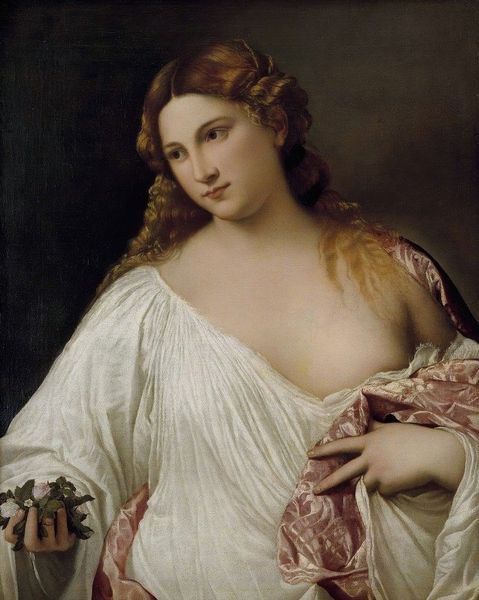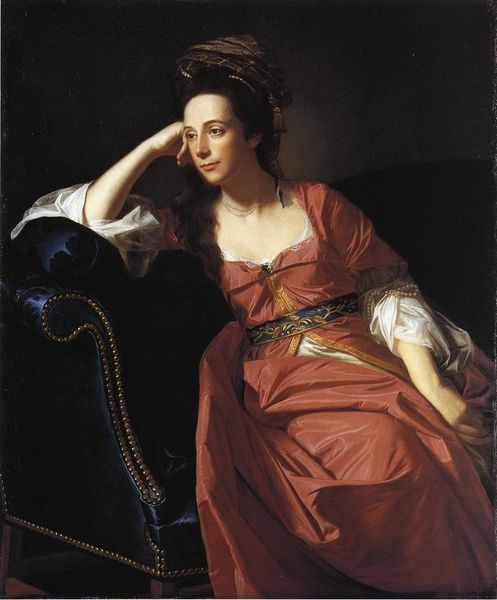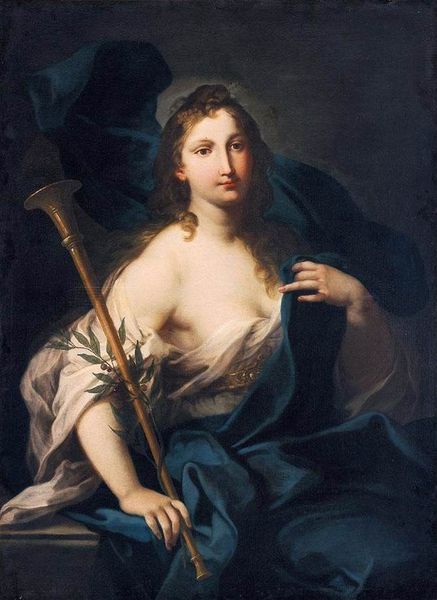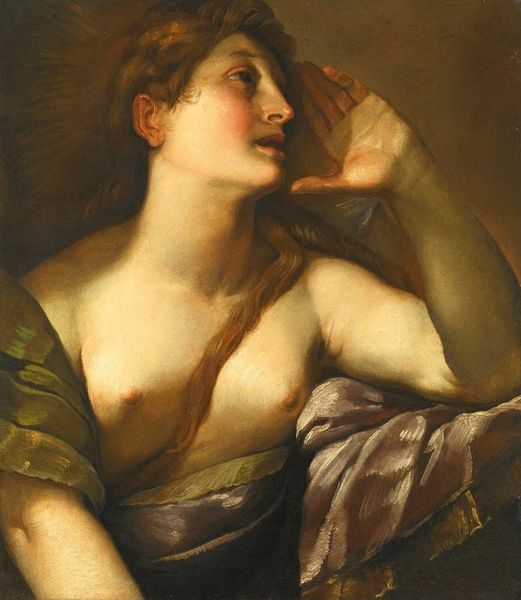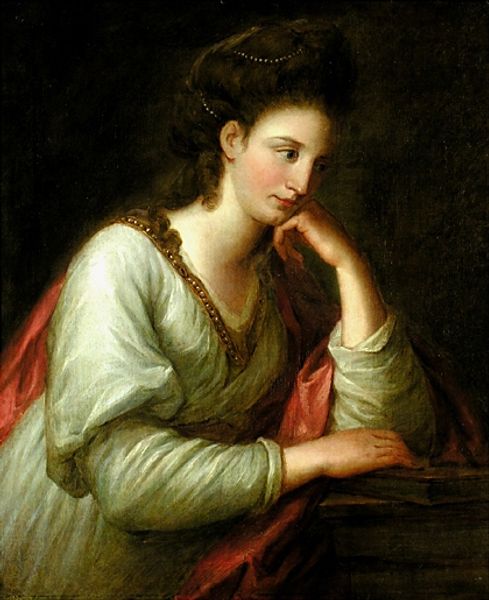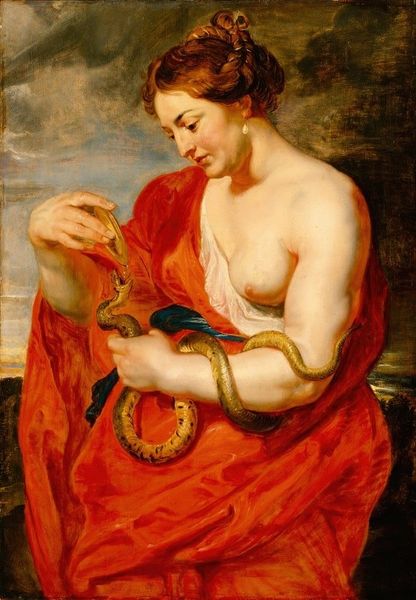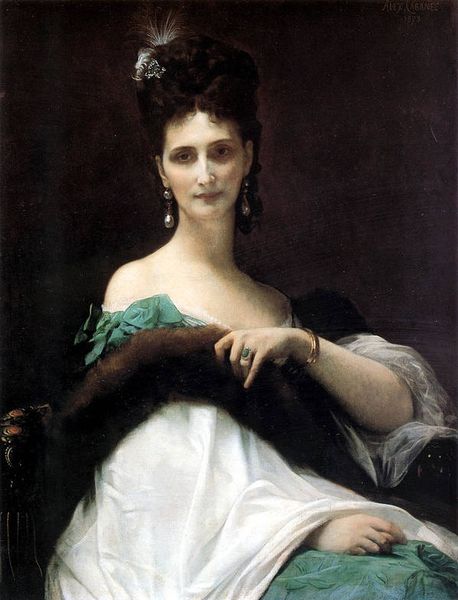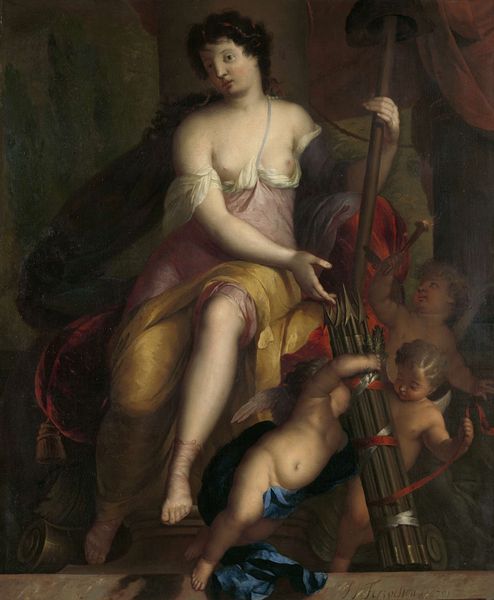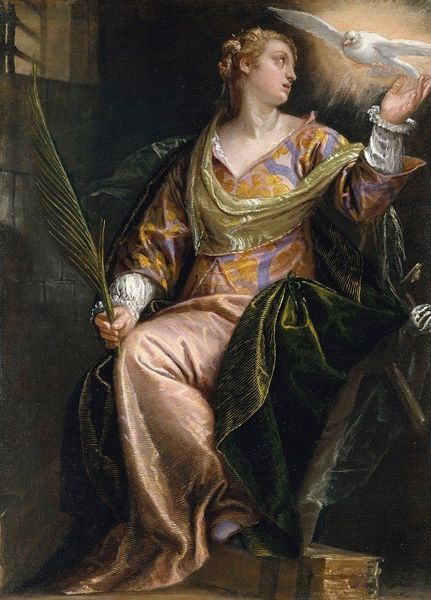
painting, oil-paint
#
allegory
#
baroque
#
painting
#
oil-paint
#
costume
#
costume
#
history-painting
#
academic-art
#
lady
#
italian-renaissance
#
nude
Copyright: Public domain
Editor: We’re looking at Artemisia Gentileschi's “Minerva” from 1640, painted in oil. The dramatic lighting definitely gives it a serious, almost defiant mood. How do you interpret this work? Curator: Considering Artemisia’s personal history, and the rarity of female artists achieving such prominence in the Baroque era, this Minerva becomes particularly compelling. What does it mean for a woman, who faced immense personal struggles, to depict the Roman goddess of wisdom, strategic warfare, and justice? It shifts the conversation, doesn't it? Editor: Absolutely! It's more than just a mythological portrait. Curator: Precisely. It enters into dialogues about female agency and power. Think about it: Minerva was a virgin goddess, self-sufficient and independent. Artemisia, through her brush, is making a statement. Consider how her personal history influences the narrative - the lack of traditional female representation in the 17th Century... It all plays a crucial role. Doesn't the subject’s gaze seem so direct? Editor: It really does. It’s like she's challenging the viewer. Curator: That's a deliberate choice. Artemisia's Minerva refuses to be objectified. It demands respect, intellect. By controlling the gaze, she subverts the patriarchal dynamics of the art world at that time. Editor: So, by painting Minerva in this way, she's reclaiming power and giving a voice to women. Curator: Exactly. And this "Minerva" is not just a beautiful image; it’s a visual argument, a defiant assertion of female strength and intelligence. This artwork becomes a crucial lens for understanding both Baroque art and early feminist perspectives. Editor: I hadn't considered the extent of that defiance before! It gives the piece a whole new depth. Curator: Indeed. Art is never created in a vacuum.
Comments
No comments
Be the first to comment and join the conversation on the ultimate creative platform.
